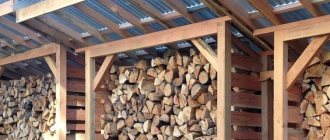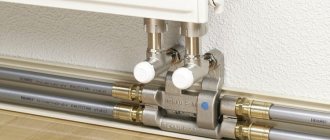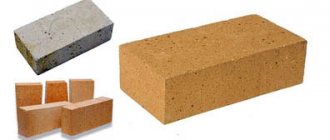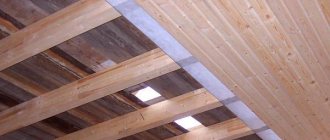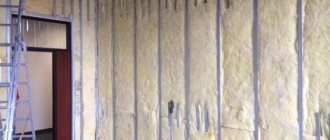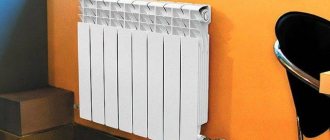Is there a universal filter for charcoal hoods?
Today, universal carbon elements are quite popular, which can be used in almost all types of hoods in recirculation mode, that is, when there is no connection to ventilation.
VIDEO INSTRUCTION
Which is better, a charcoal or grease filter for a hood?
Often, air exhaust hoods make do with only one filter – a grease filter, but for complete air purification it is still recommended to install a carbon one. How are they different from each other?
The fatty one performs rough cleaning and is designed to trap large particles of fat and soot that can damage the motor blades. The fatty element also protects the inner walls from oil vapors. Absorbs up to 96% of fat particles and unpleasant odors.
Coal ones are intended for fine cleaning; it is no coincidence that they are called anti-odor or absorption. Absorbs gases, harmful impurities of steam, odors.
Fat disposables are made from synthetic fibers, for example, acrylic, padding polyester, non-woven fabric. Used in inexpensive hoods. They cannot be cleaned and therefore require replacement.
Reusable ones are made of metal and mesh foil - symmetrical or asymmetrical. For production, stainless steel or galvanized steel with a protective layer against oxidation is used. Reusable ones are more practical; they are easy to wash by hand or in the dishwasher. Used in more expensive hoods.
Let's look at several models of grease filters on the market.
Lissant-yug produces cassette versions suitable for use at temperatures up to +70C. They are non-separable, made of galvanized or stainless steel with a thickness of 0.5 mm. The filter element has five plates.
Manufacturer Roven offers customers a one-piece prefabricated structure made of stainless steel or galvanized steel that can withstand temperatures up to +80C. The filter element has three or five plates.
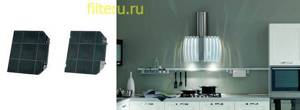
The manufacturer Titan produces options made of stainless steel with a thickness of 0.5 mm and a working environment temperature of up to +70C.
Carbon filters are all disposable. The degree of filling may vary. The denser the coal, the lower the throughput. The shape can be round, rectangular, concave, flat. The body is usually made of plastic.
Buyers can order a carbon element of the desired size or purchase a standard one.
The range of hoods with a carbon element is very large. Thus, carbon filters for hoods from Hansa, Gorenje, Krona, and Electrolux are popular.
It is impossible to unequivocally answer the question which one is better, since it is necessary to use them simultaneously. In this case, high-quality and complete air purification will be ensured.
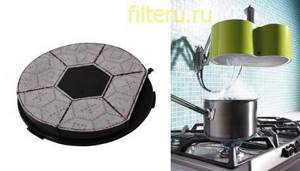
Where to buy a carbon filter for an exhaust hood - review of manufacturers
Let's consider different options for hoods with carbon purification systems from popular manufacturers.
Hoods:
Filters:
Carbon filters for Krohn hoods are used in equipment in two modes: ventilation and recirculation. There is a large assortment of hoods in different price categories.
If your hood does not have a built-in filter, or you need to purchase a new one to replace it, you should pay attention to the carbon filter for the Jet air hood. The Portuguese manufacturer produces high-quality accessories and consumables that require replacement once every six months
Carbon filters for Folter hoods are produced at the Russian enterprise Folter. This is one of the leaders among domestic companies producing dust collectors and filters for both household and industrial use.
Chinese manufacturers do not lag behind Russian and European competitors, and if desired, you can purchase Shindo elements that can be easily used for equipment of different brands.
error: Content protected!!
Homemade plasterboard hood
Tools and materials
The easiest way to make a hood is to build a corrugated pipe with an electric fan into a kitchen cabinet located directly above the stove or hob. But such a hood cannot be called beautiful - which means we will take a different, more complex, but more productive path!
To make a passive dome hood we will need:
- Moisture-resistant drywall - from this we will make a box to house the air duct and the dome of our hood itself.
- Galvanized metal profiles for the frame of the box and dome.
- Perforated metal corner for decorating the corners of our hood.
- Corrugated pipe - air duct.
- Fastening elements.
- Insulating material for wrapping corrugated pipes.
- Putty and paint for finishing the dome.
The set of tools with which we will make our hood will be familiar to anyone who has ever worked with drywall:
- Hammer.
- Screwdriver.
- Metal scissors for cutting profiles.
- Tape measure and level (preferably laser).
- Spatulas and brushes.
When everything is ready, you can start working.
Manufacturing
We begin work on the manufacture of the hood by marking the room. We will need to place on the wall not only the hood itself, but also the air duct, which we will hide in a plasterboard box to ensure the aesthetic appearance of our kitchen.
The easiest way to mark is if the ventilation hole in the kitchen is located above the stove itself. If the hole is to the side, you need to mark on the wall the position of the box for laying the air duct.
Note! If you plan to make a suspended plasterboard ceiling in the kitchen, then you don’t have to hide part of the air duct, but run it under the ceiling lining.
When we have decided on the placement of the air duct, we proceed to making a frame for it:
- We attach a starting profile made of galvanized metal to the wall at the level marking the lower surface of the air duct box. To fasten the profile we use anchors with a 6 mm plastic sleeve.
- We also attach the starting profile to the ceiling according to the markings we applied. If we plan to make the air duct box curved, we cut and bend the profile before fastening it.
- From the starting profile, we lower several vertical fragments of the main profile down, attaching them to the starting profile using self-tapping screws.
- We complete the formation of the frame for the box by installing another panel of the starting profile on the resulting hangers. We install transverse strips on the lower part of the resulting profile, which will then be covered with plasterboard.
You can study in more detail the technique of working with drywall and the profile for it by watching video instructions on the Internet.
Making the hood body
The box is ready - it’s time to move on to making the hood itself:
- From the starting profile we make the lower frame of our hood, securing it to the kitchen walls. The easiest way to attach the frame is if we are in a niche - otherwise the side parts of the frame will need to be additionally attached to the box.
- We cut out the frame elements of our future structure from the main profile, and use them to connect the box with the lower frame, as shown in the photo.
- To add rigidity to the structure, we reinforce the side surfaces of the hood with transverse bridges from the profile.
The frame is ready. Now all that remains is to attach the air duct from the corrugated pipe to the ventilation hole - and you can cover the dome with plasterboard.
To prevent the air duct from making noise during operation, we wrap it with batting or other soundproofing material.
Advice! Before making an air duct for a kitchen hood and connecting it to the ventilation, check the presence of draft in the system. If it is not there, you need to contact the operating authorities to clean the ventilation ducts of the building.
Hood finishing
We finish the hood as follows:
- We cover the air duct box and the hood body with plasterboard.
- We protect the corners with a metal perforated corner.
- We putty the resulting plasterboard structure, masking the joints of the plasterboard sheets and the locations of the fasteners.
- We paint the hood in the color of our choice or finish it in another way. Our homemade kitchen hood is ready.
The advantage of this technology is that this instruction is suitable not only for the manufacture of a passive hood, but also for the manufacture of an active type hood. In this case, it is enough to install an electric motor inside the housing at the entrance to the air duct and connect it to the network.
Kitchen hood diagram
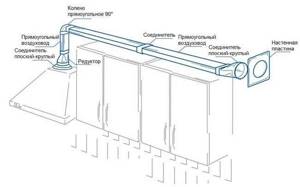
In order to better understand what you are going to do, you must first know the circuit diagram of the device and the principle of its operation, otherwise you will not be able to do anything normally. This is also necessary so that you can disassemble and then reassemble the hood yourself in case of breakdown or cleaning, which it is advisable to do at least every six months to avoid a possible fire.
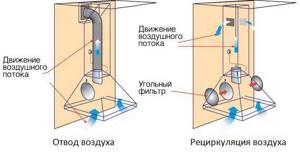
The motor or motors play a big role in the hood, since in some more powerful models two of them are installed. This is a kind of “heart” of the entire device; the power of the operating device depends on it. Most often, such engines have a power from 50 to 200 watts, their speed is from 1500 to 2000 per minute. The performance of the device depends on this, but do not forget that the higher the power, the more electricity the hood will consume, be sure to take this into account
In addition, more powerful hoods will have a high noise level, you also need to pay attention to this
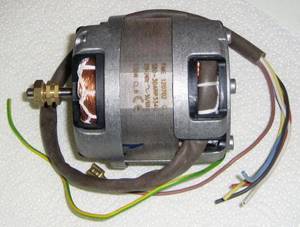
A large role in the energy consumption of the hood and its structure is played by the lamps installed in it and aimed at illuminating the stove or hob. Most often, LED or halogen lamps are installed. If you want to save on energy consumption in the future, then you should give preference to LED lamps, since halogen lamps consume virtually the same amount of energy as conventional incandescent lamps.
To connect the device to the network, a regular cord is used, most often its length is one and a half to two meters; if this is not enough for you, you will have to use an extension cord. If you want to hide the cord and extension cord, think about it in advance.

An important role in the structure of the hood is played by the anti-grease filter, which is located literally “at the entrance” of the device and is visible above the hob. This filter is needed to capture unpleasant odors, as well as protect the engine and other parts from dirt and large impurities. This is a kind of metal mesh or dense perforated foil, which has several layers; ideally, it should have an anti-corrosion coating.
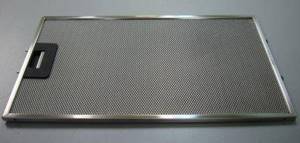
Some inexpensive models have so-called disposable filters; they are made of synthetic fabric; they will have to be changed very soon. They are inexpensive, but it is not very convenient, so it is better to give preference to the first option. The filters need to be cleaned periodically, as they become covered with soot and grease, which can cause unpleasant odors and spoil the operation of the device.
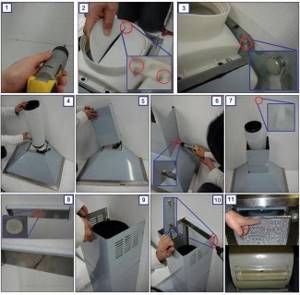
Some more expensive models have carbon filters, which are usually installed behind the hood motor. Such filters help further purify the air; they contain microgranules made of carbon, which work on the same principle as filters for water purification. The disadvantage of such filters is that they need to be changed frequently; this is easy to do, but requires some skill. Dirty or old filters interfere with the normal operation of the kitchen hood.
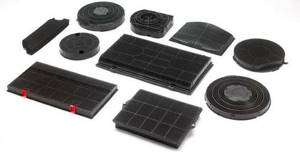
Hoods also have several types of controls that differ from each other; you need to choose the type that seems convenient for you; by and large, they do not have any functional differences. Here are the main types of control:
- Push-button control. It represents the presence of ordinary recessed buttons that are familiar to every person. Usually the buttons are located on the front panel of the hood and are easily accessible. Such control is most often found in the cheapest models of the device, but at the same time it is also the most reliable

Slider control. Also an inexpensive type of control, which is found in many economical models. It works on the principle of a movable lever, it moves along the divisions, changing the power of the device and sometimes the lighting of the hob
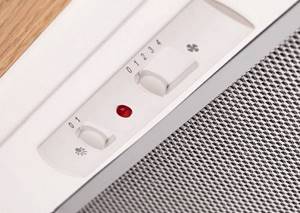
Touch control. This control is the most popular; it is found in most modern devices. Firstly, it looks very stylish, does not require special care and does not lose its presentation even after long use. The touch panel is most often located on the front panel of the hood and works at the slightest touch. In more expensive models, you can even set a specific program for the operation of the device. For example, when a strong odor suddenly appears, the motor begins to work in an enhanced mode, aimed at quickly eliminating the unpleasant odor; when a person approaches, a light indicator is activated, which illuminates the surface.
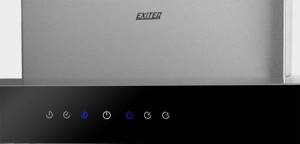
Video - installation of a kitchen hood
Some of the smarter models also operate without human intervention, turning on and off automatically when an odor is detected or the stove is turned on/off.
What you need to know before work
Before you start developing a homemade kitchen hood, you need to understand exactly how such a device functions, look at photos of ready-made models online to choose the best option for yourself.
Not everyone knows that there are types of devices that do not simply extract exhaust air, but process it with special filters, releasing it back in a purified form. Some models simply remove the air mixture from the kitchen through the ventilation system to which they are connected.
But if your kitchen is medium or large, you have no problem and make your life easier with our entire range. They're built to last for years and are very energy efficient, so save yourself the guilt and skip the dishwasher or a nice refrigerator or microwave!
Range hoods have the design and technology to cook food without worrying about smoke or odors. Our removable, integrated or traditional island decorative hoods adapt to all spaces and designs. Discover a huge catalog of powerful, quiet and low range range hoods that will also be impressive in your kitchen.
Therefore, the first thing you need to do before developing hoods with your own hands is to make sure that the ventilation system in the house is working properly.
If the ventilation is dirty, the draft force will be reduced or may even be absent altogether. As a result, the hood will not be able to perform its functions. Therefore, before starting all work, it is important to clean the air mixture exhaust system from the kitchen.
From 40 to 120cm wide, 44mm high and in a range of stainless steel or glass finishes, at Teke we have the hood to suit you best. Perimeter suction system that eliminates smoke and root odors and a recirculation function that does not require a chimney. Models with remote control and motorized opening, anyone give more? They're super easy to clean, with anti-fingerprint stainless steel, removable filters that you can wash in the dishwasher, and keep vent-free systems to prevent grease buildup.
- Huge range of sizes.
- With suction programming and automatic shutdown.
- So you don't have to worry about anything other than cooking.
- You will hardly notice if they are working because they are very silent.
- They have sound-absorbing panels that reduce noise and vibration.
You'll find a variety of shapes and sizes to suit any space, with eye-catching designs in stainless steel or white or black glass that you'll fall in love with.
When plastic window structures with high tightness are used in the kitchen, special ventilation valves should be installed on them, otherwise the operation of the hood will be low in efficiency.
A DIY kitchen hood can be one of two types:
- active;
- passive.
Passive-type models remove the air mixture from the room only due to upward draft, since they do not have any fans or electric motors. As a result, a self-made hood of this type can only work if the ventilation is in excellent condition.
Video - installation of a kitchen hood
At Teka you will find the decorative bell your kitchen needs.
Models that allow you to extend your extraction area when you really need it and remain invisible the rest of the time. The kitchen stove is an indispensable product for cooking in good conditions. And because every cook is different, the hood comes in many models: Filter Unit, Range Hood, Corner Hood, Center Island Hood, as well as Decorative Hood Wall, Retractable Hood, and Worktop Hood or Hood Our catalog contains over 500 items from the industry's leading brands ! Active hoods operate thanks to an installed electric motor. Such models are highly efficient, but consume a lot of electricity.
Cleaning Rules
A built-in hood with a carbon filter without an outlet requires constant replacement of the air purification component. Depending on the features and the selected filter, the latter has to be changed frequently. This is a necessary element that you cannot do without.

Once a month, it is necessary to inspect aluminum or stainless steel mesh filters to remove soot and grease from their surface. It is best to do this once a week, then the cleaning process will be easy. In this case, the grate itself will not have time to become overgrown with a new layer of plaque. Manufacturers recommend a simple way to remove it: remove the mesh and put it in the dishwasher. If the pollution is quite intense, the equipment may not cope. In this case, you can resort to household products with an alkaline composition.
Removing various contaminants and fumes harmful to health is the task of a carbon filter. But the element itself also requires cleaning periodically. Laundry soap and ordinary soda dissolve fats well. As an alternative, the use of dishwashing gel and cleaning compositions for gas stoves is allowed.
Procedure
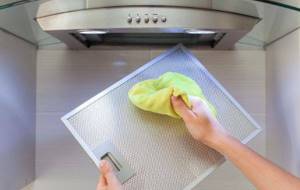
If the hood has not been washed for years, more potent products will be required. This could be a drain cleaning gel. For minor stains there is no point in purchasing such compounds. Regular soda can easily and easily cope with the problem.
Metal filters should be cleaned as follows:
- Remove the hood grate and place it in any wide container.
- Prepare the cleaning composition. To do this, fill a pack of soda with three liters of water. After this, transfer the solution to a container with a wire rack.
- Heat on the stove, simmer for about 10 minutes over low heat. If it was not possible to get rid of the dirt after this, boiling should be continued. After washing, rinse the filter with running water and dry. After that you can put it in place.
Special cleaning compositions and gels are used in accordance with the instructions on the packaging. Usually they are applied to the grill and kept for a certain time. It is better if the housewife runs a brush or plastic brush over the mesh cells. Next, you will need to wash it under water and dry it.
Sequence of work
If your kitchen is more conventional and your space is smaller, then a decorative hood will surely fulfill most of your expectations. Always also designed and easy to use, it is replete with very nice functions. Multiple electronic controls provide control of suction speed, with a boost function to speed up the capture of unwanted flavors. Lighting also gives your stove a little more visibility and gives you more control over your work.
Finally, it is very important to note that current models make it much easier to replace lube filters. Changing a clogged or time-consuming filter is no longer a chore with modern hoods. They are compatible with most devices sold in this department! You are sure to find a device that can meet your expectations and your budget.
After preparing all the required materials along with the tools, you can begin to carry out the necessary work. Their first stage is marking the future device and its air duct on the walls of the room. The simplest option is when the ventilation hole is located directly above the hob. If it is somewhere to the side, it is also necessary to develop a box for decorating the corrugation.
Choosing a design or a fume hood?
Need a built-in fume hood with efficient evacuation and recirculation systems?
Although the main function of a hood is suction, it is important to choose a range hood that suits the style of your kitchen, then look for a range hood or a stainless steel range hood. The color and style will vary greatly depending on the decor of that room, for example a gray or black hood with a modern finish is ideal for a modern kitchen. On the other hand, if your kitchen has a classic, rustic wood decor, we recommend a classic, white or colored matching cabinet. If the kitchen ceiling is finished with plasterboard, the air duct can be partially decorated with it.
The next step requires making a frame to accommodate the air duct using galvanized metal profiles. They are mounted where the air duct will pass in the future, using anchors. If the pipe is not straight, the profile will need to be installed with bends in the required places. The initial profile - the starting one - is installed downwards in several parts, securing them with self-tapping screws.
What does a homemade kitchen hood consist of?
Side pots and pans, not height.
The unpleasant odors and unbearable noise of the exhaust hood are gone; the silent exhaust hood will remain unnoticed while functioning effectively. If you cannot stand the noise emitted by the motor of this unit, we recommend that you purchase a model that does not exceed 30 decibels. Whether equipped with metal filters or carbon filters, the hood is equipped with a high-performance extraction system. Please review the information available on our product sheets before purchasing. There is a lot of information available. We indicate the exact dimensions as well as the power of this device. The number of speeds is indicated. You will be able to adjust the evacuation speed to suit your cooking, whether the heat is low or steady. You will also find the sound level and energy class.
The next stage is the completion of the arrangement of the plasterboard box. To do this, a second panel is installed on the already finished parts. Upon completion of the development of the lower part, transverse strips are installed on top of it, later they will be sheathed with sheets of plasterboard.
At the fourth stage, you need to make the body of the future hood. Above the stove, the lower part of the exhaust device, made of a profile, is installed on the wall. The task will be greatly facilitated when a niche is provided for the device. If it is not there, then the lower side of the hood should also be attached to the sides from the sides. The main components of the hood are made from a profile, attaching them to the bottom. To give the structure greater rigidity, it can be reinforced with jumpers, which are also made from a profile.
Our buying guide is also at your disposal to inform you of the important points. In addition to the volume mentioned above, you should also consider the type of evacuation. The most effective is external extraction. Oil vapors, water vapors and unpleasant odors are sent outside through the air duct. If you are unable to drill into the wall to install this hood model, we recommend using a recirculating device. These models have a carbon filter that you will need to replace every six months to ensure its effectiveness!
To prevent unnecessary noise during operation of the hood, the pipe must be wrapped in high-quality soundproofing material.
The last stage is finishing the device. To do this, the hood body and the duct with the air duct are sheathed with sheets of plasterboard. Next, a layer of putty is applied to it, which will hide the seams between the sheets and fasteners. After this, all that remains is to paint the hood and the box; you can also decorate them instead.
To help you with your purchase, read our customer reviews. After ordering their fume hoods from our online store, they impartially rated these filtration units, taking into account various points such as installation, ease of use, lighting power, sound level or unit efficiency.
Making a kitchen hood with your own hands: plasterboard hood
High quality, reliable and high performance hoods are available: unbeatable brands at unbeatable prices, all you have to do is enjoy! Lubricant filters are a very important part of the functionality of a hood, but most of the time we don't think about it. Neither when purchasing a hood, nor when installing it at home.
This type of design is suitable for both passive and active exhaust devices. In the second case, an electric motor must also be installed inside the device body, connected to a grounded outlet. It will create a strong draft that will quickly remove waste air from the kitchen.
Types of filter elements
First, you need to understand why you need a grease filter for your hood in the first place, so that you don’t have the temptation to get rid of it, supposedly so that it “draws better.” This applies to disposable items that must be replaced frequently. And they are needed to protect the fan motor from sticky greasy deposits getting inside, which will cause the unit to fail very quickly.
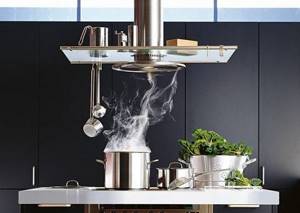
The same sticky substance will cover the inside of the air ducts and walls of the shaft. Not only will they themselves begin to emit an unpleasant odor, but they can also become a hotbed for harmful microorganisms and food for cockroaches. This is prevented primarily by a grease filter for kitchen hoods, installed on all devices without exception. But the presence of the second type of elements - coal depends on the type of household appliance, which are:
- direct-flow;
- recirculating.
Direct-flow hoods are mainly hoods without a carbon filter, since they do not require one. The fan captures contaminated air and throws it into the exhaust shaft, from where it comes out under the influence of natural draft. Recirculation units do not require a shaft, since after purification they return all the air back into the room.
Important. When using a direct-flow type household appliance for exhaust hood in the kitchen, care should be taken to organize the flow of air from outside into the house
To do this, just open the window slightly or set the plastic window sash to ventilation mode. Otherwise, odor removal will be ineffective.

Recirculation hoods are equipped with a grease and carbon filter. The first traps fats, the second produces fine air purification. Carbon elements come in different configurations, but work the same way: the air mixture passes through a layer of activated carbon granules. This creates additional resistance in the flow path, which can be solved by using more powerful fans.
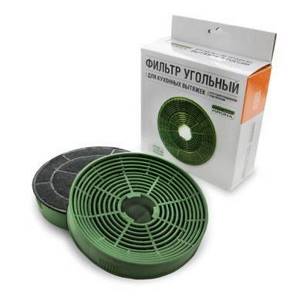
But filters that retain fat particles come in different types:
- disposable grease filter. Once contaminated, this element must be replaced; it cannot be restored by washing;
- perforated aluminum filters. They are in mid-price range hoods and can be cleaned by washing;
- mesh and perforated stainless steel elements. The most expensive cleaners, but they are durable and easy to regenerate (clean).
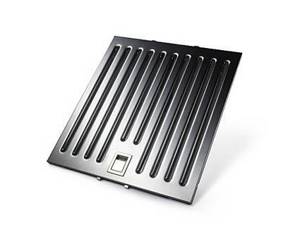
General information about kitchen hoods
Before moving on to considering the proposed options for manufacturing devices for removing “exhaust” air from the kitchen, it is necessary to understand the very principle of operation of the hood.
As the name implies, a kitchen hood forcefully “pulls” hot, polluted air from the kitchen—or rather, from the space above the stove—and then removes it from the room.
As a rule, the air is removed into the ventilation ducts of the building - which is why, when buying or making a hood, you must first of all take care of the proper state of the ventilation of the house. If there is no draft in the system (and this happens when the ventilation has not been cleaned for a long time), then the efficiency of the hood will be extremely low.
In order for air to be removed as efficiently as possible, it is necessary, along with proper ventilation, to ensure sufficient air flow into the room.
Note! If you have metal-plastic windows with a high level of tightness installed, you may observe some problems in the operation of the hood - therefore experts recommend either using the micro-ventilation function or installing supply ventilation valves on the windows.
The modern market of household appliances offers us many models of hoods, but by and large they can be divided into two large groups:
- Passive - dome-type hoods that remove air solely due to upward draft. There are no electric motors or fans inside these devices, but such a hood will only work if the ventilation ducts of the building or a high ventilation pipe are in good condition.
- Active - hoods, the operation of which is ensured by an electric motor installed inside. Such devices operate more stably, but consume quite a lot of electricity.
You can do it yourself. At the same time, the final price of the new device will be much lower than that of one purchased in a store, and even more so than that of a custom-made one.
Below we will tell you how to properly make a kitchen hood if you want to create a truly individual model!
Carbon filter
If you want to assemble a smoke air purifier with your own hands, the main active ingredient should be coal. It is able to eliminate strong, unpleasant odors in the room. It is used together with a fan (selected according to the dimensions of the room).
To make the body, you can take plastic pipes with a diameter of 200 and 150 mm. Length and size are trimmed. Holes are made in the inner pipe using a drill and a drill bit (15 mm). The drill may become dull in the process.
Holes with a diameter of 30 mm are also made in the outer pipe. The distance between them should be 5 mm. A large pipe is covered with agrofibre. Next, it is wrapped with a painting net and clamped with clamps. The protruding agrofibre must be trimmed with a blade. The same procedure is performed with the inner pipe, but first you need to put on a painting mesh and agrofibre on it. The edges should be treated with aluminum tape.
The circles that remain after drilling are installed in the plug. One pipe is put into another. Coal is poured inside. The structure is placed on the fan.
Having considered how to make an air purifier with your own hands, everyone will be able to complete all the work quickly and efficiently.
Home comfort How to make an air freshener with your own hands?
Home comfort largely depends on how and what the smell in your home is. If the air is stale and stale, then you probably shouldn’t hope for a pleasant vacation. Of course, there are many ways to fix this...
Cars How to make a heated steering wheel with your own hands?
Fierce competition among car manufacturers has driven this industry to incredible progress. Many manufacturers are interested in attracting potential buyers to their brand. It is especially difficult to come up with...
Cars How to make a sailing catamaran with your own hands?
A catamaran is a type of vessel that is made using two or more structurally integrated hulls. This type of watercraft is especially suitable for fishing, sports, tourism and entertainment purposes, obtaining…
Cars How to make an expedition trunk with your own hands?
Probably every motorist who loves long journeys has encountered the problem of a small luggage compartment. Sometimes all the things you need simply don't fit in the luggage compartment. But what then? Put everything in the salon?...
Business Horse mowers: device, reviews. How to make a horse-drawn mower with your own hands?
Today, during haymaking, you rarely see tools such as a scythe and a rake. Almost no one uses them anymore. There are a huge number of devices and technologies that make life easier for modern farmers...
Business Cinder block machine: description, device. How to make a cinder block machine with your own hands?
Cinder block is a very convenient building material for the construction of small residential buildings. Many home craftsmen who have free time and the desire to make building blocks...
Business Ferrite ring - what is it? How to make a ferrite ring with your own hands?
Each of us has seen small cylinders on power cords or coordination cables for electronic devices. They can be found on the most common computer systems, both in the office and at home, at the ends of wires that…
Home and family How to make a pastry syringe with your own hands from scrap materials?
It is customary to decorate any confectionery product. For cakes, pastry syringes are used. The device allows you to transform cakes, pastries, and fill eclairs with cream. If there is no such product, then it can be…
Home and family How to make rattle toys with your own hands
Parents choose the first toys for their baby with special trepidation. I really want to show my little one something beautiful and interesting. At the same time, it is desirable that the toy is also useful. Please your child with something exclusive and...
Home and family Where are slimes sold? How to make such a toy with your own hands?
Slime is one of the most popular and affordable anti-stress toys. In our country, such fun appeared around the mid-90s of the last century and created a real sensation. Play with sticky ball...
It is difficult to imagine a modern kitchen today without a hood, which is necessary when preparing food. Some companies have switched to producing so-called fume hoods without filters.
How to clean the hood correctly
If you decide to clean your kitchen hood yourself, you should follow several rules:
- Do not forget that the hood is an electrical appliance, and before you start cleaning, you should disconnect it from the power supply.
- Start the process with filters: they are removed in different ways, some are snapped on, others are fixed by turning. See the instructions for more information on this.
- Take a soft sponge or cloth and lightly wet it. Squeeze it properly.
- Clean all corners and parts of the engine, try to prevent water from getting into those places where there are wires.
- If the filter is reusable, wash it too. It is better to leave both the electrical appliance and the filter for 1-2 days.
- After you remove the dirt with a damp cloth, you should use a dry cloth to remove all traces of moisture.
Important! Do not use any abrasive cleaning agents. Do not even try to wash the engine with dishwashing detergent, this will lead to the penetration of chemicals into the electrical appliance system. The next step is to repair a kitchen hood with a filter.
Timely maintenance of the hood will have a beneficial effect on its performance.
How to connect a hood in the kitchen - see here.
Myths about filters
Today there are a lot of myths about filters, but let's deal with them in order.
- The filter is not able to get rid of foreign odors in the same way as an evacuation hood. A universal carbon filter is quite capable of coping with odors, grease and soot that settle on the surface of furniture. Regarding evacuation hoods, this is also a controversial issue. Many imported equipment are simply not suitable for our domestic ventilation systems, which often may not even function, and, therefore, there will not be the desired fresh air in the apartment.
- Regularly changing and installing a carbon filter in the hood is more expensive than connecting the evacuation hood to the ventilation system. Everything is not as simple as it may seem. The evacuation device also requires the installation of a filter to protect the engine; in addition, the purchase of an air duct, many adapters, clamps, sealant, polyurethane foam, and PVC pipes incurs large costs. If it is necessary to obtain a permit, there are additional costs. And the time frame for replacing filters is not so short that you could go broke buying them endlessly.
- Only filters of the same brand as the device are suitable for the hood. It is not at all necessary to purchase filters from the manufacturer; you can even find higher quality filters from another company.
Recirculating kitchen hood with replaceable carbon filters
In fact, devices with carbon filters have a number of advantages. Firstly, they are easy to install and easy to connect. Secondly, they are great for poorly ventilated rooms where there is no access to fresh air
It is also worth paying attention to the fact that the filters are easy to replace, you can even make them yourself
What is a hood
Still, let's take a closer look at what a kitchen hood with a filter is, what it consists of, and how it works.
Frame
The first thing we see when buying a hood is the metal body, which provides reliable protection for the “internals”.
Differences:
- Material - most often ordinary steel is used, but on more expensive models high-quality stainless steel is installed.
- Shape and dimensions – hood dimensions can range from 500 mm to 800 mm. There are also more bulky products, but they are intended for industrial premises.
- Appearance – the design of hoods is multifaceted. You can always find something interesting for your kitchen. The color of the products can also be attributed to this, usually used: chrome, matte steel, black and white.
In the photos below you can see the various options.
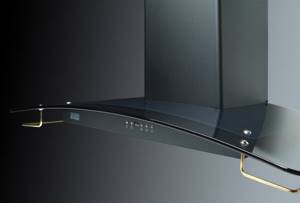
Matte black kitchen hood with stylish bronze elements

Chromed stainless steel looks very stylish
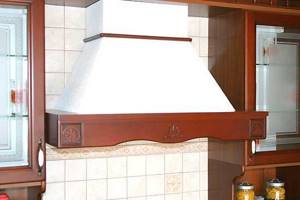
White dome hood with a wooden edge - the wood can be painted to match the color of your set
Note! The price of a hood may vary depending on the color chosen, since chrome-plated steel is the cheapest. All other types require additional investments: applying paint, sanding.
Engine
That part without which the hood is of no value. Engines differ mainly in the maximum power they are capable of developing.
You should choose the power as follows:
- Calculate the total area of the kitchen.
- Multiply the resulting number by the height of the room.
- Then multiply all this by 10. You will get the approximate “power” that your hood should have.
Reminder! Kitchen hoods with a filter should be more powerful than products that work directly with the air duct. This is due to the fact that the electrical appliance requires more effort to force dirty air through the filter.
Control
This section can be divided into three parts:
- The touch panel is the most modern type of device. Simple and easy to use. There are no disadvantages, since the service life of the touch buttons is almost unlimited.
- Standard panel - ordinary buttons that work according to the on/off system. There is nothing complicated; such models are the most common, as they fall into the category of inexpensive devices.
- A slider panel is a type of control that is found in the cheapest models. So to speak, “the last century.” It cannot be said that it is less reliable, but soon such a slider easily becomes unusable.
Let's talk about the next section more specifically, since this is the main component of the hood.
Read also the article “How to make a hood in the kitchen: step-by-step instructions.”
Filter classification
Before choosing a filter for your hood, it is worth knowing about the two operating modes of these devices. When air is removed, the performance is maximum, and the degree of cleaning of the room is close to 100% - contaminants are removed into the ventilation shaft and from there go outside. The recirculation mode ensures the removal of harmful impurities from the air that settle on the carbon filter elements. The second option is more convenient to use, but is more expensive, since you need to change the filter elements for the hood every six months.
If the hood works only for exhaust, it only has a pre-filter installed. Thanks to this, grease and fumes do not get inside the housing, which is then very difficult to clean. For recirculation, additional cleaning from small particles will be required, and you will have to buy or make a carbon filter for the hood.
Grease filters
Aluminum grease filters are easy to remove and wash
An element called a coarse filter cleans the air flow and prevents not only the pipes, but also the motor from becoming dirty. If it gets on the engine blades, which can happen if there is no primary filtration, the grease sticks to the surface and is difficult to clean.
The cleaning device can be disposable, requiring replacement after some time, or reusable - cleaned and reinstalled. Disposable, replaceable filters for hoods are made of synthetics such as acrylic or synthetic padding. They are used in inexpensive models mounted under kitchen cabinets. You should not use such filters repeatedly - they still will not clean the air.
Reusable grease filters for hoods are made of metal and have a long service life. The devices themselves are periodically cleaned and washed. They look like cassettes and consist of a metal body and filter elements (mesh or perforated foil) with holes for air passage. Fat is freely retained, and the question of how to change the filter in the hood does not arise at all.
In addition to steel mesh, other filter materials are also used. For example, Elica brand meshes have anodized aluminum, which prevents oxidation. The cata hood filter, produced in Spain, has the same design - its two filters are easy to wash with warm soapy water. The product has 5 layers of protection and completely protects the electric motor from grease particles. This aluminum filter for hoods allows air to pass freely during periodic maintenance.
Carbon filters
Carbon filter CF 160 for Maunfeld GRETTA hood
For the recirculation mode, the requirements for atmospheric quality are higher. Grease and soot, stopped by primary cleaning, are supplemented by a device that prevents odors from entering the room. To do this, a fine carbon filter for hoods is placed on the device immediately behind the grease collecting element.
The main part of carbon filters consists of activated carbon, which reliably retains contaminants. By absorbing harmful substances, the element retains them in itself. Filter carbon has these properties.
A serious drawback of the device is its high price, reaching 2.5 thousand rubles. But it is possible to create a carbon filter for your hood with your own hands. The homemade product is pitted on the basis of coal cores.
The efficiency of the filter is related to their density (the higher it is, the lower the throughput). You can increase consumption by periodically changing replacement filter elements. The usual consumables are changed every 3 months. Providing high-quality cleaning, but also getting dirty faster, the elica hood filter is recommended to be renewed after 2 months. The Jetair and Fabriano cartridge requires replacement 3 times a year. and the best filters for hoods, krona and Bosch, last up to a year.
Features of frame development
However, it is important to keep the grease filters clean: regular maintenance is important to maintain the efficiency of your hood. You should also be aware that there is a fire hazard if there is grease in the filter. Some home fires are caused by exhaust hoods - one of the main reasons is lack of maintenance of the filters.
Installing a hood in the kitchen with your own hands
To maintain your metal oil filters, you can either wash them by hand, as some hood manufacturers recommend, or put them in the dishwasher, which is much more efficient. Place them in the bottom compartment of the dishwasher and run the machine at 65 degrees to dissolve the grease. It is advisable that you only place the filters in the machine, otherwise - take a greener gesture - place them, for example, in slightly dirty glasses.
To make the appearance of the finished device attractive, you will need to perform the following work.
Assemble the main body of the device, installing a grille and, if necessary, an electric motor on its lower part. If at the initial stages of work the structure does not look very attractive, do not worry - the cladding will qualitatively hide any unevenness.
How the hood works
The metal lubricating filter is relatively expensive, but with regular maintenance it has a consistent lifespan.
Attention, a hood in a lower price range may have a synthetic fiber filter instead of a metal filter. The latter must be replaced on a regular basis: it must be remembered, done and accepted as a recurring cost. Carbon filters are intended only for “recycling” hoods. If you don't have an exhaust pipe, you can't install one from a hood or vent. An alternative to this type of hood is a recirculation system that returns ambient air and filtered air to the kitchen.
Next, the frame is attached to the base; everyone chooses its shape independently, depending on their own preferences. The main thing is that the air duct pipe must be placed inside. In this case, you can look at ready-made ideas in photos from the Internet or do everything yourself.
Finishing parts are cut out from the selected material and used to cover the frame. After the glue has dried, the surface of the material is sanded and a layer of putty is applied to it. After it dries, all that remains is to paint the finished hood, made by yourself, in the desired color.
As in a fume hood, an aluminum filter is used to remove some grease. To remove odors with the hood installed during the disposal process, there is a carbon filter that needs to be changed every 2-6 months. But after 10 well-cooked meals, the effectiveness of the carbon filter was halved. The big downside: Almost all users forget to change the carbon filter due to its price, and it's rarely a priority in everyday life - the recycling hood is becoming less and less efficient at all levels.
- Keep in mind that the recovery hood is useless for removing vapors!
- The frequency depends on the type of food you prepare and the frequency with which you cook.
Please note: Most fume hoods can be installed in either evacuation or recirculation mode.
Having done everything correctly, you will make a high-quality and functional hood with your own hands, which will not only do its job perfectly, but also have an attractive appearance.
Thus, the process of developing a hood with your own hands does not imply anything complicated, so anyone can do it themselves. The result is a functional exhaust device that will have a completely original appearance.
What do you need to know for ventilation to work effectively?
It should be noted that some manufacturers pre-assemble the carbon filter.
This means you must remove it in case of a build for extraction. We have seen several cases where a consumer complaining about poor hood evacuation realizes that it is due to the presence of a pre-assembled carbon canister they were not aware of. If the hood is rotating with a carbon filter that becomes increasingly oily, it can also affect engine life in both extraction and recirculation mode. Quite often, when remodeling a kitchen, we are faced with a problem: the kitchen hood either does not fit the dimensions of our set, or does not fit into the design of the kitchen at all. The solution in such a situation could be a homemade kitchen hood - and even though its creation will require us much more time than installing a factory hood, but as a result we will get a device that ideally meets all our requirements!
In this article we will tell you how to make a hood in the kitchen yourself, and we will provide two fairly detailed instructions for making it yourself.
Why a filter in the hood?
Why does your kitchen assistant need such a part as a charcoal filter? The fact is that if your hood operates on the principle of air recirculation (that is, after entering the device, the air is purified and returned to the kitchen) - then, in any case, you need such a purifier. Modern devices have several levels of filtration - at the first, fatty impurities and soot are removed from the air, and at the second, other inappropriate odors and particles should be eliminated. A carbon filter works best for this.
Read Kitchen hood: how to choose the right one
Principle of operation
Why do you need a carbon filter in a hood?
The working principle of a kitchen hood. As you can easily guess from the name, a carbon filter works using activated carbon, which is an excellent absorbent. It absorbs and retains inside all harmful substances passing with the air flow. If its task is to purify the air coming from the ventilation shaft, then its efficiency increases by almost 20%. But during processes of constant air circulation, the carbon filter quickly becomes clogged and loses its effectiveness.
However, in modern devices you can’t do without it, because it’s not enough to just get rid of fat. In fact, such consumables are quite popular, and their validity period ranges from two to four months. They may differ in density and quality of substance retention. Of course, they won’t save you from the slightest particles, but they can provide relatively purified air. The main thing is not to forget to change them in a timely manner.
It is worth noting that carbon filters, as a rule, are not included in the package, so you need to purchase them yourself. And in order for your cleaner to last as long as possible, you need to leave the hood on after completing kitchen work for at least five minutes. This will remove the remaining moisture from the device, and the coal will retain its absorbent ability.
Advantages of laser roulette
Care and replacement
The grease filter accumulates all contaminants on the cells, preventing them from penetrating into the internal parts of the device. What is the best way to clean it in practice? You need to follow the following simple technology:
- The filters are removed from the hood. This may require dismantling the decorative panel (if it is included in the structure). To remove it, the lock is released and the cassette is pulled out.
- The metal filter is immersed in an aqueous solution of standard detergent. It can also be washed in the dishwasher when installed vertically.
- This will allow dirt to be washed off easily. If you wash by hand, it is better to use brushes and constantly rinse the mesh under pressure of hot water. But it is better to avoid such a product as soda, since it may leave brown spots on the metal. You should also not choose a high-temperature mode in the dishwasher - elevated temperatures can cause aluminum to oxidize and darken.
- The washed filters should dry at room temperature.
At the final stage, the filters are installed in place. To do this, the cassette is placed in the cell, after which the lock is latched.
The grease filter should be washed once every 2-3 months in the dishwasher - if this equipment is not available, then the mesh should be washed manually once a month. It's not difficult, especially considering that its installation is simple.
Grease filter for hood and its design
The daily preparation of various dishes is certainly accompanied by the emergence of various odors, which, if distributed throughout the home, create certain inconveniences. Kitchen hoods cope well with such troubles.
Such devices capture air above the stove, quickly removing it along with various odors from the apartment through the ventilation system. The most important element of any modern hood is the grease filter, without which the device’s engine would very quickly fail.
Semi-professional filters
A new product on the market are reusable hood filters, the basis of which is stainless steel. Such elements are easier to maintain compared to aluminum models. In addition, they are more durable and do an excellent job of cleaning the air.
Among such new products, the products of the Elica brand deserve attention, which consists of many cells located asymmetrically. The air moves through such cells as if through a labyrinth, which helps retain the maximum number of fat particles in the filter.
Filter types
Recirculating hoods, unlike air exhaust hoods, do not remove dirty heated air, but clean it through filters and return it to the room. These hoods are equipped with two types of filters - grease and carbon.
The grease filter is designed for rough air purification and prevents the formation of greasy deposits on the engine and fan blades. The efficiency of the grease filter is 95%. In turn, filters of this type are replaceable (disposable) and metal (reusable).

Attention! Replacement filters are not washable. They will lose their properties, will not retain suspended particles of fat, and the engine will quickly fail.
Behind the grease filter is a carbon filter . Its role is to perform fine cleaning and absorb kitchen odors. Visually, it is a round plastic cassette or a rectangular cartridge with an adsorbent - powder or small coal granules. The filter is protected from spillage of contents by a fine-mesh mesh.
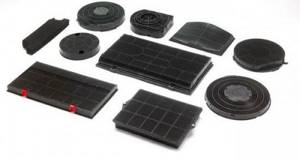
The carbon filler collects small pollutants on its surface. Therefore, purified fresh air is returned to the room. The filter loses its throughput after 3-4 months. Some hoods are equipped with an indicator that indicates that the anti-odor filter is very dirty.
Read Ventilation duct for hood
Advice. Do not rush to turn off the hood after finishing work in the kitchen. If she works an extra 10 minutes. then clean air passing through the filter will remove moisture and prevent coal dust from compacting, which means the cartridge will work longer.
Why is air purification from fat necessary?
Modern hoods can operate in two popular modes. The first is the removal of air outside the kitchen, that is, to the street or into a ventilation shaft. The second method is recirculation, after which air masses that have already been used, but cleared of contaminants, enter the room.
Depending on the operating mode of the hood, grease filters perform the following functions:
- When venting air. They protect structural elements, including the engine, from the impact of large particles of dirt (grease, soot).
- When recirculating. They purify the air from the above elements in order to purify the air, and also serve to protect the engine and other parts of the ventilation equipment design.
In addition, in recirculating hoods, grease traps protect a carbon filter, which is used to remove odors, gases, and some combustion products.
As the information presented indicates, a grease filter for any modern hood is necessary to protect its structural elements from the effects of any large particles of dirt.
Why is this necessary? If you do not clean it from grease and soot, then in just a few weeks all kinds of internal surfaces of the hood itself and the engine will be covered with a suspension of layered dirt particles.
Its abrasive properties will be enhanced by unfiltered dust. This will cause a significant increase in the load on all rubbing elements of the hood, first of all this concerns an expensive engine.
As a result, increased wear and tear will begin, after which premature breakdowns will occur, which will lead to significant financial losses.
When recirculating, the responsibilities of the grease filter are added. And poor cleaning will lead to significantly greater negative consequences.
The reason for this lies in the fact that the air that will be reused is cleaned not only of fat and combustion products, but also of odors.
Therefore, an expensive filter element is additionally used to remove them, which should also be protected. After all, dust and grease deposits easily, and most importantly quickly, lead to loss of effectiveness of the odor filter.
As a result, cleaning with coal hood will not be carried out, and this again means additional financial costs and harm to health.
Grease filters for hoods: types, their features and disadvantages + how to choose
Kitchen hoods remove contaminated air from the kitchen, most often to the street, and it would seem why filtration is needed in this case.
After all, these are additional costs and hassles associated with the selection, purchase, and replacement of equipment responsible for cleaning. All this is true, but it is worth knowing that grease filters for the hood are a mandatory part of its design and saving in this case is to your detriment. Moreover, the losses can be serious, including equipment breakdown and ignition of the resulting fatty deposits.
Disposable filters
Disposable grease filter
Filters in kitchen hoods can be disposable or reusable. It is clear that the second type is of higher quality, but the first is also quite common.
Some synthetic materials are used to make disposable cleaning devices:
- padding polyester;
- interlining;
- acrylic and some others.
In appearance, such grease filters resemble a small thin rug. They are usually used in budget models of hanging hoods installed on kitchen cabinets. They are called flat.
Synthetic filters should be replaced as they become dirty. Some housewives even manage to wash such devices by reusing them. It is not recommended to do this, since it will not be possible to return the initial cleaning properties of synthetics, and with each subsequent use, air purification with the filter will be less effective.
Grease filters
Any kitchen air purifier must have a grease filter. It is designed to clean the air flow passing through the device from small suspended fatty particles. If it had not been there, then less than a month would have passed before the internal surfaces of the hood, including the engine, were covered with a layer of oil suspension.
The grease filter can be disposable or reusable - it is clear that the latter type is better and more practical. Disposable models are made from padding polyester, acrylic or non-woven fabric and are most often installed in budget flat-type structures. Such “rugs” made of synthetic fabrics are thrown away as soon as they become dirty.
Disposable fat “catchers” cannot be washed; when washed, they lose all their properties. That's why they are disposable.
Using an “updated” product in this way is fraught with engine damage.
But a metal grease filter will last as long as the hood itself - it is distinguished by its quality, safety, reliability and durability. Such designs are better because they do not need to be replaced, but only require periodic washing.
A traditional grease filter is a cassette in the form of a metal frame and a mesh element made of foil (in the form of a mesh or with perforation). The perforation here can be uniform or asymmetrical, and the provided cells are necessary to change the direction of air flow. This allows fat particles to be retained on the surface.
The metal grease filter can be made of aluminum, galvanized steel or thin stainless steel. In high-quality technology, aluminum is additionally anodized, which protects the product from oxidation. Such structures can have several layers or be made in the form of several modules. Two or three separate cassettes are easier to maintain - they are easy to remove, wash and return to their place.
A stainless steel grease filter is considered better than an aluminum one, since this material has a longer service life. In addition, products of this type purify the air more effectively.
Types of hoods
Now let's talk about the types of kitchen hoods themselves, what they are.
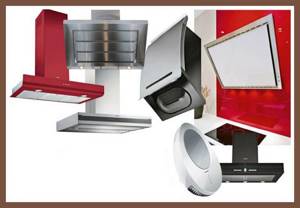
At the hardware store you can buy anything, even a round kitchen hood
- Flat wall - they are also called standard. They are mounted on the wall and have a special metal frame in which the air duct is hidden.
- Dome - they have an original design, they are most in demand in large rooms where bulky electrical appliances can be placed. They are quite overpriced due to their appearance, although they are not particularly powerful.
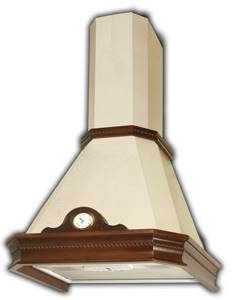
Dome hood with built-in clock
- Built-in hoods are a type of hood that fits perfectly into the interior. They are hidden in the cabinet, only the sliding panel remains visible. They have high power, which is necessary for devices with filters.
Read also the article “What types of kitchen hoods are there - how to make the right choice.”
